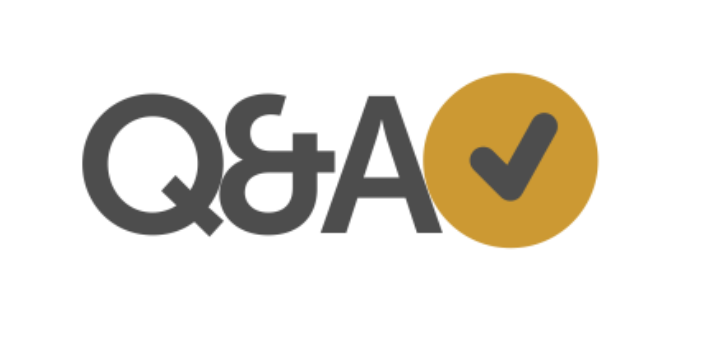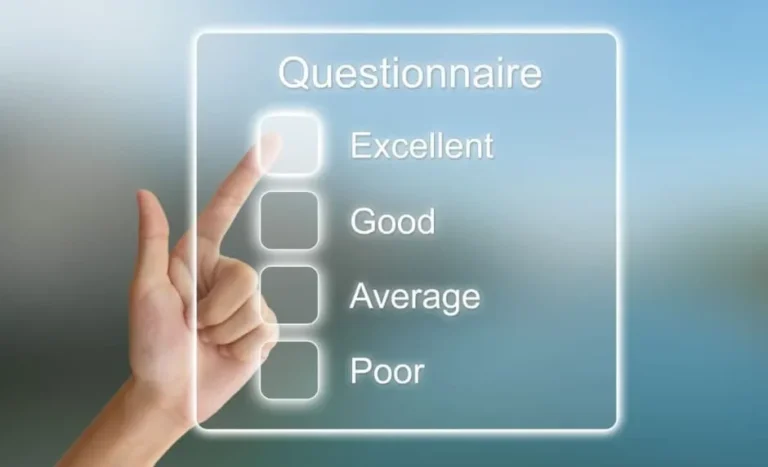Have you ever taken a survey that made you feel like you were being led down a certain path? One that was nudging you towards a predetermined answer? That is what biased survey questions do.
Biased survey questions can feel like sly manipulators, twisting responses and undermining the integrity of collected data. If this is new to you, read on as we discuss biased survey questions and unveil strategies to lessen their influence in your surveys.
From loaded language to leading questions, we’ll dissect the tactics used to sway responses and explore ways to craft questions that encourage genuine feedback.
Table of contents
What are biased survey questions?
So, you know when you’re asked something, but the question kind of hints at what the person asking wants to hear? That’s what biased survey questions are all about.
Biased survey questions are questions that are designed in a way that influences or manipulates respondents’ answers, leading to inaccurate or skewed data. They’re like leading questions that steer you toward a certain answer.
These questions often contain subtle cues or wording that may unconsciously guide respondents toward a particular response, thus compromising the integrity of the survey results.
For example, consider the following question: “Don’t you agree that our product is the best in the market?” This question is biased because it assumes that the product is the best, potentially influencing respondents to agree, even if they may have had a different opinion.
Biased questions can sneakily influence the results of surveys because they don’t give everyone a fair shot to share their true thoughts. It’s like trying to play a game where the rules are already set against you.
They can arise unintentionally due to poor question design, leading to inaccurate data and misleading insights. So, it’s important to spot these sneaky questions and make sure surveys are fair and square for everyone.
Read: 70+ Brand Perception Survey Questions With Sample Template
How do you determine if a survey question is biased?
Biased survey questions can have a significant impact on the reliability and validity of survey results. When respondents are led towards a particular response, the data collected becomes skewed and fails to accurately represent the true opinions and experiences of the target audience.
Spotting biased survey questions is like being a detective for fairness. First, look out for loaded language that sways your answer one way. Then, check if the question assumes something or pushes you to agree with a certain idea.
Also, watch for double-barreled questions that mix up two things at once, making it hard to answer accurately. Another red flag is when questions are too vague or confusing, leaving you scratching your head.
Lastly, keep an eye out for questions that only give you limited choices, leaving out other options. If you spot any of these sneaky tactics, you’ve likely found a biased question!
Why are biased survey questions problematic?
Biased survey questions are like wearing glasses with the wrong prescription—they distort reality. When surveys are biased, they don’t accurately capture what people think or feel.
Imagine if a survey asked, “Don’t you love this new video game?” That doesn’t leave much room for someone who might not like it. Biased questions can lead to misleading results, which can be a big deal, especially if decisions are made based on those results.
It’s like building a house on a shaky foundation—it won’t hold up. Plus, biased surveys can create unfairness by silencing voices that don’t fit the mold the question wants. So, making sure surveys are fair and unbiased is super important for getting the real scoop from people.
Also, read: 50+ Workshop Survey Questions with Sample Evaluation Form
Also, see: 50 Frequently Asked Questions About Time Travel with Answers
Types of biased survey questions
Here’s a breakdown of different types of biased survey questions with examples:
Leading Questions
These questions subtly guide respondents toward a particular answer. For instance, “Don’t you agree that our new policy will greatly benefit everyone?” nudge respondents towards agreeing without considering alternative viewpoints.
- Don’t you agree that our school’s new policy on homework assignments has significantly improved student performance?
- Wouldn’t you say that our science teacher is the most knowledgeable and effective educator in the school?
- Do you think it’s fair to say that our school’s sports teams are the best in the district?
- Isn’t it true that the cafeteria food has greatly improved in quality since last year?
- Would you agree that our principal’s leadership has greatly enhanced the overall school environment?
Loaded Questions
These questions contain emotionally charged language that influences responses. An example could be, “How could anyone support such a reckless proposal?” This question implies that supporting the proposal is unreasonable or wrong.
- How much longer do you think we can tolerate the incompetence of the current administration?
- Do you believe that the recent changes in policy are just another attempt to undermine our rights?
- Why do you think some people are so opposed to progress and innovation?
- Can you explain why certain individuals always seem to benefit unfairly from these new regulations?
- When will the school board finally address the rampant corruption and favoritism within the faculty?
Double-Barreled Questions
These questions cover multiple topics at once, making it challenging for respondents to provide clear answers. For example, “Do you think the company’s products are high-quality and affordable?” This question combines two separate aspects, making it unclear which aspect the respondent addresses.
- Do you agree that the new curriculum is both challenging and engaging for students?
- How satisfied are you with the school’s extracurricular activities and the amount of time they require?
- Would you say that the teachers’ communication skills and availability outside of class are effective in supporting student learning?
- Do you think that the school’s disciplinary policies are fair and consistent across all student demographics?
- Are you content with the school’s resources and facilities as well as the cleanliness and maintenance of the campus?
Socially Desirable Questions
These questions prompt respondents to answer in a way that aligns with societal norms or expectations rather than their true beliefs. An example might be, “Do you always recycle to help protect the environment?” This question may lead respondents to answer affirmatively to appear environmentally conscious, even if they don’t always recycle.
- Would you agree that being environmentally conscious is an important value to uphold?
- Do you believe that everyone should strive to treat others with kindness and respect?
- How strongly do you agree that it’s important to give back to the community through volunteer work?
- Would you say that honesty and integrity are qualities that should be admired and cultivated?
- Do you agree that it’s essential to prioritize health and wellness in our daily lives?
Close-ended questions
Close-ended questions in biased surveys limit respondents to predefined answer choices, often leading them toward a particular response. This format can subtly influence participants’ opinions and fail to capture the full range of their perspectives, resulting in skewed or incomplete data.
- Do you agree that the recent changes in policy have improved the overall efficiency of the organization?
- How satisfied are you with the quality of customer service provided by our company?
- Would you recommend our product to your friends and family?
- Have you ever experienced any issues with the reliability of our services?
- Do you believe that our company values align with your personal values?
Open-ended questions
Open-ended questions in biased surveys allow respondents to provide their own answers without predefined options. While seemingly neutral, they can still be biased if designed to elicit specific responses or if follow-up questions are leading, steering participants toward desired conclusions.
- How do you feel about the recent changes in policy implemented by our organization?
- Can you describe any experiences you’ve had with our product or service that stood out to you, whether positive or negative?
- What are your thoughts on the level of diversity and inclusion within our company?
- Please share any suggestions or recommendations you have for improving our customer experience.
- In your own words, how would you describe the culture and atmosphere within our workplace?
Vague questions
Vague questions in biased surveys lack clarity or specificity, making it difficult for respondents to provide meaningful or accurate answers. This ambiguity can lead to misinterpretation or inconsistency in responses, ultimately skewing the survey results and compromising their reliability and validity.
- How do you feel about the recent changes?
- Can you provide feedback on our services?
- What are your thoughts on the company’s performance?
- How satisfied are you with the product?
- Do you have any comments about the presentation?
Biased survey question examples
Biased survey questions are designed to manipulate responses by subtly nudging participants toward a specific answer. They often employ loaded language, assumptions, or limited choices to skew the results in favor of a particular agenda or viewpoint.
For example, a question like “Do you agree that our school’s new policy is a step in the right direction?” assumes that the policy is universally positive, ignoring the possibility that some may disagree. Similarly, a question such as “How much do you love our brand?” suggests that the respondent must love the brand to some degree, disregarding the possibility of neutral or negative sentiments.
These questions aim to elicit responses that support a predetermined narrative, rather than seeking genuine feedback or diverse perspectives. Here are 20 more examples of biased survey questions:
- Don’t you think our product is the best on the market?
- Would you agree that our company provides excellent customer service?
- How satisfied are you with our flawless performance?
- Do you believe that our organization is leading the way in innovation?
- Isn’t it true that our policies always prioritize employee well-being?
- Would you say that our team is the most efficient in the industry?
- How likely are you to recommend our services to your friends and family?
- Do you feel that our company’s values align perfectly with yours?
- Isn’t our brand the most trustworthy option out there?
- Would you agree that our prices are unbeatable?
- How much do you admire our company’s CEO for their visionary leadership?
- Isn’t it obvious that our product is superior to all others?
- Would you say that our advertising campaigns are the most effective?
- Do you believe that our organization always acts in the best interest of the community?
- How strongly do you support our mission to change the world?
- Would you agree that our team always delivers top-notch results?
- Isn’t our brand synonymous with quality and excellence?
- Do you think our competitors even stand a chance against us?
- How much do you value the contributions of our company to society?
- Isn’t it clear that our company is the industry leader in every aspect?
Effective ways to minimize bias in your surveys
Now that we understand the potential harm of biased survey questions, let’s explore some effective strategies to minimize bias in your surveys:
1. Start with Clear Objectives
Begin by defining the purpose of your survey and what specific insights you aim to gather. Understanding your objectives will guide the creation of unbiased questions that directly address your goals. Whether it’s measuring customer satisfaction or gathering feedback on a new product, clarity in objectives ensures focus and relevance throughout the survey.
2. Use Neutral Language
One of the most important steps in reducing bias is to use neutral language in your survey questions. Avoid leading or suggestive words that may influence respondents’ answers. Instead, strive for clear, unbiased wording allowing respondents to express their true opinions.
For example, instead of asking, “Don’t you think our customer service is excellent?” you can ask, “How would you rate our customer service?” This slight change in wording removes any assumptions and allows respondents to provide their honest feedback.
3. Provide Balanced Response Options
Another effective way to minimize bias is to provide balanced response options. Ensure that the range of responses covers a spectrum of opinions, from strongly agree to strongly disagree, without favoring any particular viewpoint.
For instance, instead of offering only positive response options like “agree” or “strongly agree,” include options such as “neutral,” “disagree,” and “strongly disagree.” This allows respondents to express a wider range of opinions, reducing the potential for bias.
4. Test Your Questions
Before launching the survey, conduct thorough testing to identify and address any potential biases or ambiguities in the questions. Testing on a small sample group allows for feedback on question clarity, relevance, and likely biases.
Iteratively refining questions based on testing results ensures that the final survey is well-designed and free from unintended biases.
5. Randomize Your Questions
Guard against order bias by making the sequence of questions presented to respondents random. Randomization helps minimize the influence of question placement on responses, ensuring that each respondent encounters questions in a different order.
FAQs
“Wouldn’t you agree that our company’s new policy is a major improvement?” This question assumes that the policy is universally positive and nudges respondents towards agreeing, disregarding the possibility of dissenting opinions.
The four types of bias in surveys are selection bias, response bias, measurement bias, and nonresponse bias. Selection bias occurs when certain groups are systematically excluded. Response bias happens when respondents provide inaccurate or misleading answers. Measurement bias occurs when questions or metrics are flawed. Nonresponse bias results from incomplete survey participation.
To remove bias from a survey question, use neutral language, offer balanced response options, and avoid leading or loaded phrasing. Test questions with a small sample group to identify and address any biases. Randomize question order to mitigate order bias. Ensure transparency about survey objectives and use clear, simple language to enhance understanding and accuracy.
Conclusion
Biased survey questions can significantly impact the accuracy and reliability of survey results. By understanding what biased survey questions are and why they are problematic, you can take proactive steps to minimize bias in your surveys.
Remember to use neutral language and provide balanced response options to ensure that your survey captures genuine and unbiased insights from your respondents. By doing so, you can gather valuable data that truly reflects the opinions and experiences of your target audience.
So, the next time you create a survey, keep these strategies in mind and strive for neutrality and fairness. Your respondents will appreciate the thoughtful approach, and you’ll gather more accurate and meaningful data as a result.
References
- surveysparrow.com – Biased Survey Questions
- surveytown.com – Biased Survey
- formplus.com – Biased & Unbiased Question Examples in Surveys
Recommendations
- 70+ Must Ask Exit Survey Questions For a Successful Exit Interview
- 100+ Frequently Asked Questions About Immigration with Answers
- 250+ Best Fast Food Trivia Questions and Answers (Easiest to Hardest)
- 100+ Frequently Asked Questions About Social Media with Answers
- 250+ Best Geography Trivia Questions and Answers (Easiest to Hardest)





